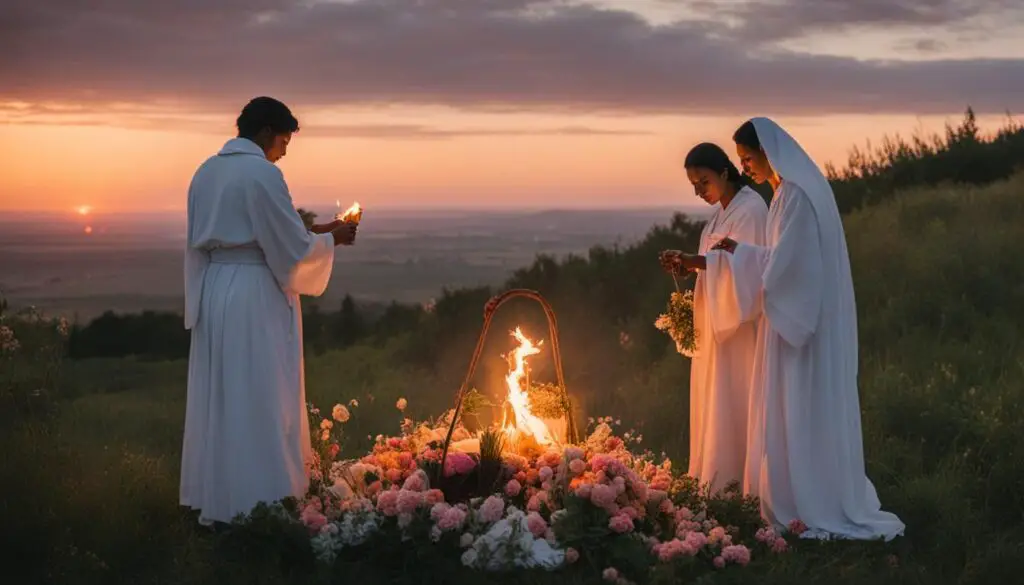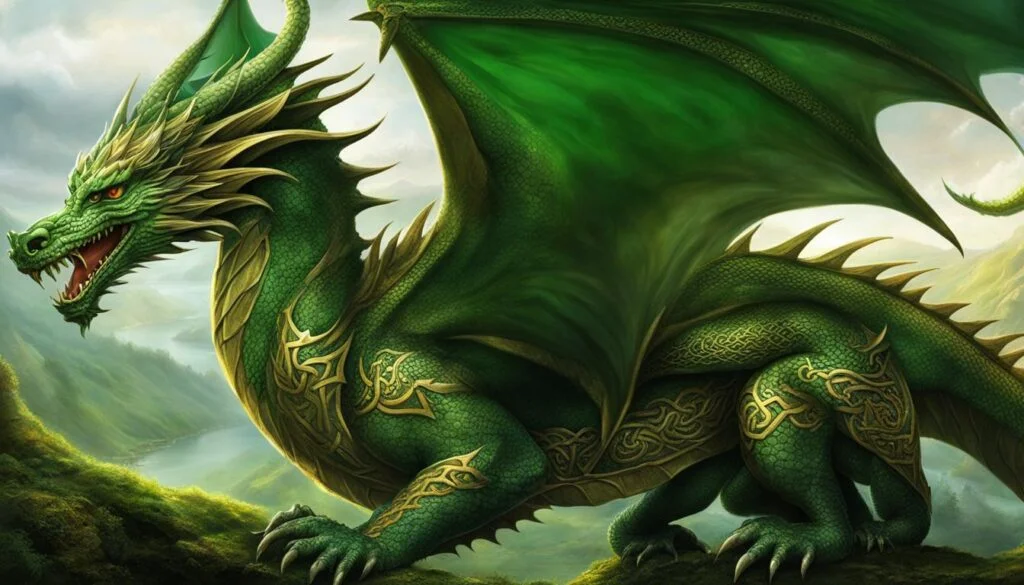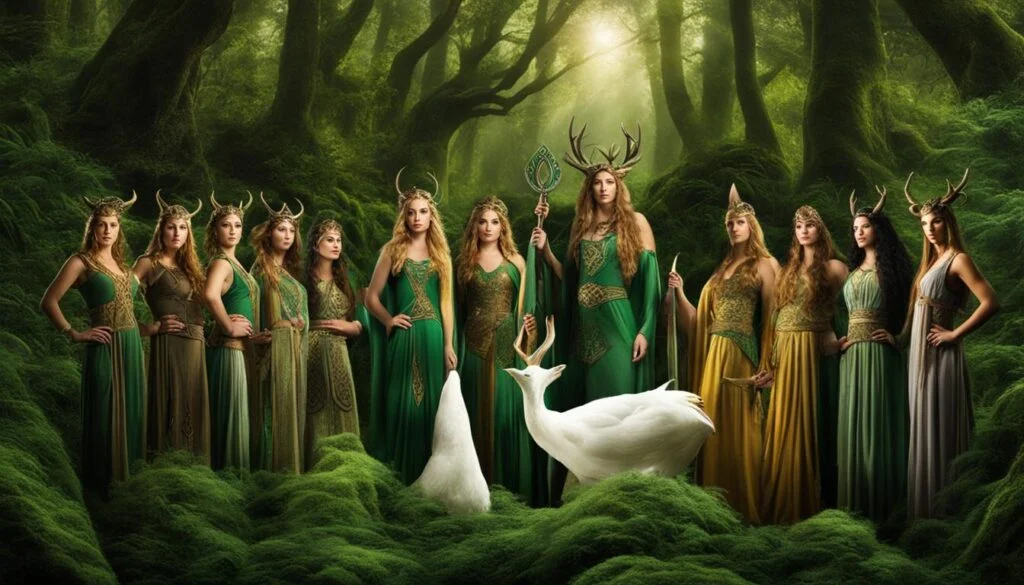Welcome to a fascinating journey into the rich cultural tapestry of Gaelic tradition. In this article, we will elucidate the profound significance of Imbolc, a time-honored festival that holds a cherished place in the hearts of the Irish, Scottish, and Manx people. This Gaelic celebration, also referred to as St. Brigid’s Day, takes place on February 1st and encompasses a blend of cultural, Christian, and pagan elements.
Imbolc is a joyous occasion that heralds the arrival of spring, with festivities steeped in ancient Celtic traditions. From feasting and the creation of Brigid’s crosses to visits to holy wells and spring cleaning rituals, Imbolc offers a glimpse into the vibrant tapestry of Gaelic folklore. At its core, this festival pays homage to the revered Goddess Brigid and serves as one of the four seasonal festivals in the Gaelic calendar.
Key Takeaways:
- Imbolc is a Gaelic festival celebrated on February 1st, known as St. Brigid’s Day.
- It holds cultural, Christian, and pagan significance, symbolizing the beginning of spring.
- Imbolc involves feasting, making Brigid’s crosses, visiting holy wells, divination, and spring cleaning.
- The festival is closely associated with the goddess Brigid and is one of the four Gaelic seasonal festivals.
- Imbolc showcases the intricate interplay between nature, mythology, and human celebration in Gaelic tradition.
The Origins and Etymology of Imbolc
Imbolc is a festival that has ancient origins and holds significant cultural and spiritual importance. The etymology of the word Imbolc is yet to be definitively determined, but it is associated with the lambing season and the cleansing rituals that take place during this time of year.
Imbolc has been linked to the Roman festival Februa, which was celebrated in mid-February and involved purifying rituals. The Proto-Celtic word meaning “budding” has also been connected to Imbolc, highlighting the festival’s connection to the awakening of nature and the arrival of spring.
The origins of Imbolc can be traced back to early Irish literature, where it is mentioned in various texts. It is closely associated with the goddess Brigid, who holds a significant place in Gaelic mythology and folklore.
As we dive deeper into the history and traditions of Imbolc, we will uncover more fascinating insights into this ancient festival and its enduring significance for both pagan and modern celebrations.
The History of Imbolc and St. Brigid’s Day
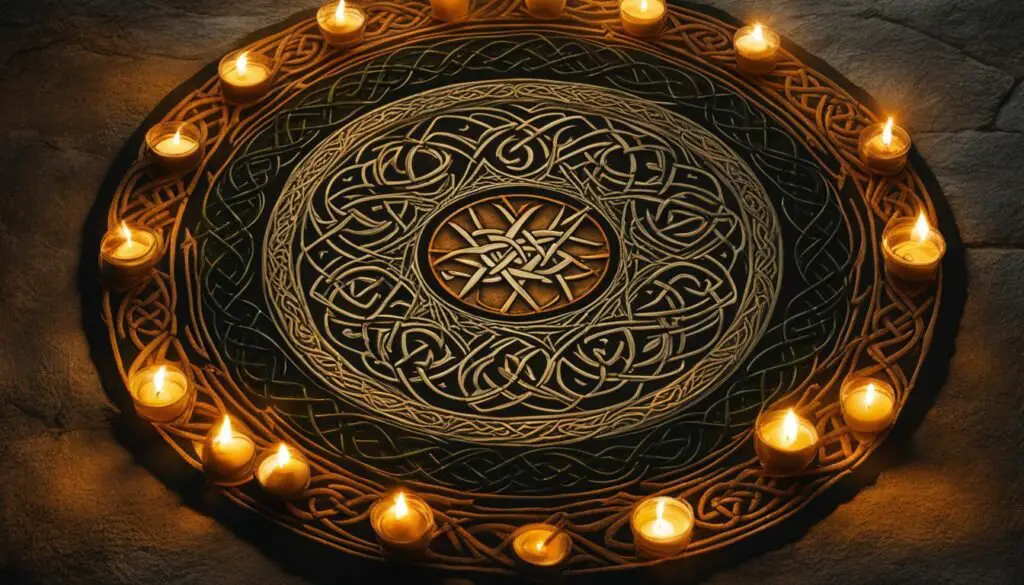
Imbolc, a festival deeply rooted in Gaelic tradition, has a rich and long-standing history. This significant celebration was widely observed throughout Ireland, Scotland, and the Isle of Man. Over time, the customs associated with St. Brigid’s Day, closely linked to Imbolc, began to be recorded in detail during the early modern era.
One of the prominent customs of St. Brigid’s Day is the creation of Brigid’s crosses. These crosses, typically crafted with reeds or rushes, hold a symbolic meaning and are believed to bring protection. They are often hung over doors and windows to ward off negative energies and invite blessings into homes.
Another notable custom is the processional doll of Brigid, known as the Brídeóg. This doll, created with great care and reverence, represents the goddess Brigid herself. During the procession, the Brídeóg is carried through the community, honoring the deity and invoking her presence.
The festival of Imbolc is closely intertwined with weather lore and the visitation of holy wells. People would seek to divine the weather patterns for the upcoming year during Imbolc, placing great importance on the conditions experienced during the festival. Additionally, many would journey to holy wells, believing in their healing properties and connecting with the sacred waters.
Imbolc and St. Brigid’s Day have deep historical roots, reflecting the cultural and spiritual significance of Gaelic tradition. The customs and rituals associated with these celebrations have been passed down through generations, preserving the unique heritage and folklore of Brigid, both as a goddess and a saint.
Brigid, the Goddess and the Saint
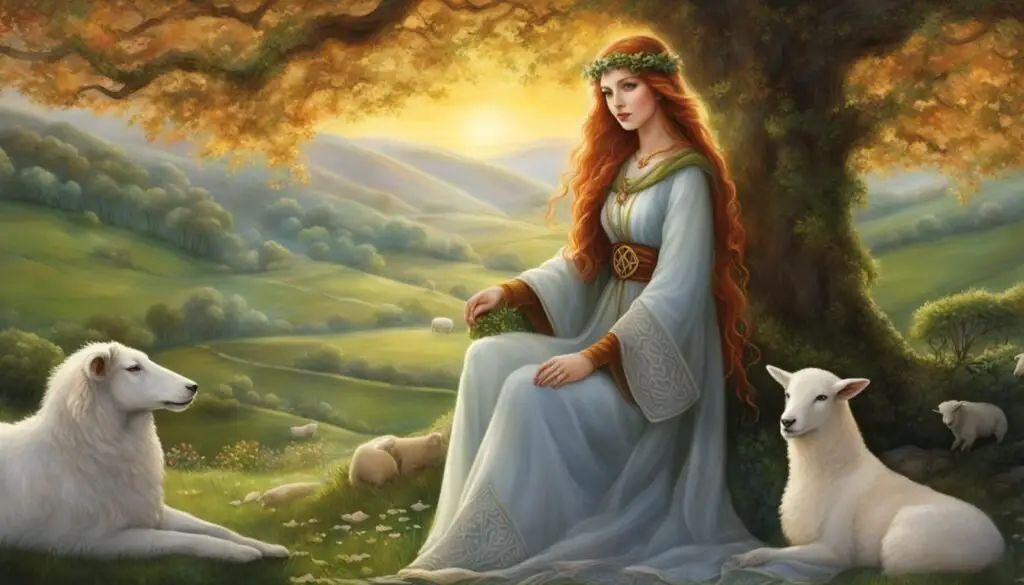
Brigid is a figure of great significance in Gaelic tradition, revered both as a Celtic goddess and a Christian saint. In ancient Irish mythology, she is associated with poetry, fertility, wisdom, and fire, embodying the power and creativity of nature. Brigid is often depicted as the daughter of the Dagda, one of the most powerful gods in Celtic mythology.
In Christian tradition, Brigid transitioned from a pagan goddess to a revered saint. St. Brigid, also known as Ireland’s patron saint, is praised for her association with agriculture, healing, and protection. Her influence extends beyond religious contexts, as her name is still prominent in Ireland and she remains an important cultural figure.
While the exact nature of the transition from goddess to saint is a subject of debate, both Brigid figures hold a significant place in Gaelic traditions. Their stories demonstrate the enduring power and relevance of Brigid in the lives and imaginations of the Irish people.
Ancient Imbolc Customs
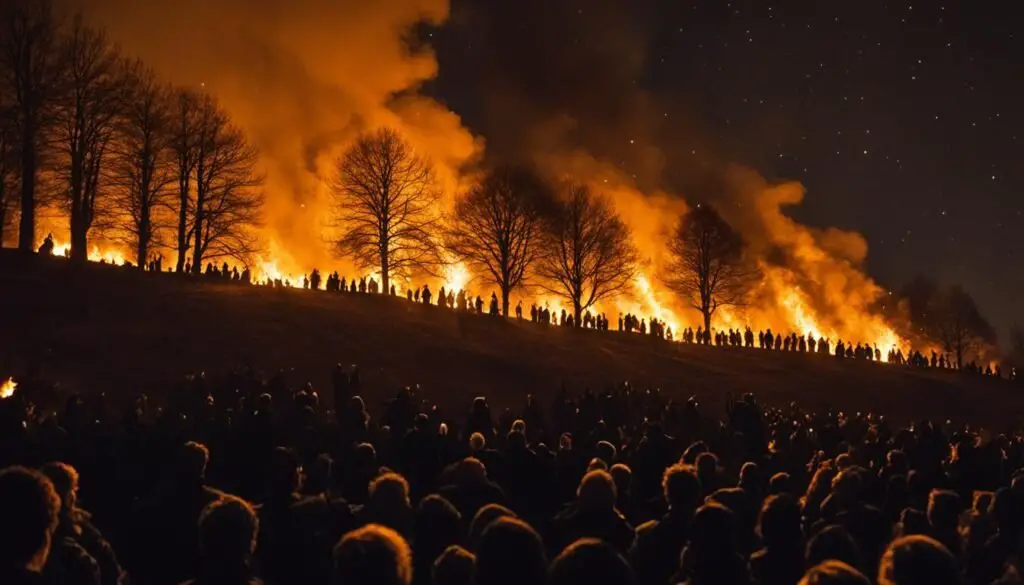
In ancient times, the festival of Brigid, known as Imbolc, was celebrated with a variety of customs and rituals that honored the goddess Brigid and welcomed the arrival of spring.
One of the ancient Imbolc customs involved creating effigies of Brigid using bundles of oats and rushes. These effigies were carefully dressed and placed in a basket overnight, symbolizing the nurturing and protective qualities associated with Brigid.
On the day of Imbolc, people would gather to light lamps and bonfires in tribute to Brigid. These bonfires represented the returning light and warmth of the sun as the days grew longer. It was a joyous occasion, filled with music, dancing, and storytelling around the flickering flames.
These customs and rituals were a way for the ancient Celtic communities to honor Brigid and seek her blessings for the coming season. By crafting effigies and lighting bonfires, they symbolically prepared for the rebirth of life in the spring and expressed their gratitude for the renewal of nature’s cycles.
Imbolc was a time of great anticipation and celebration, as the arrival of longer days and the promise of new growth brought hope and optimism to the community. It was a cherished tradition that connected people to the land, their heritage, and the divine presence of the goddess Brigid.
The Christianization of Imbolc
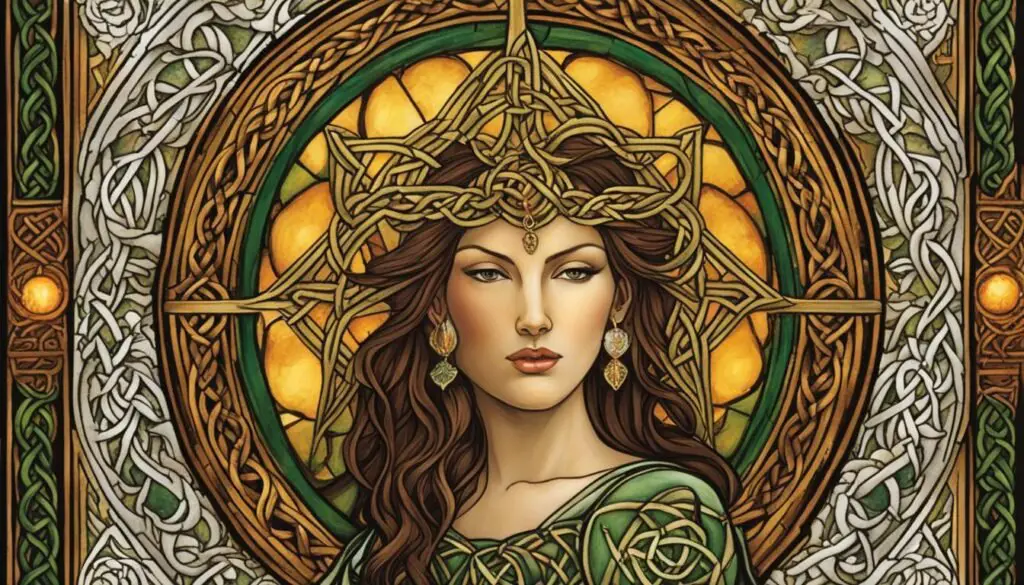
Over the centuries, the pagan festival of Imbolc was absorbed into Christianity, and the goddess Brigid became St. Brigid. St. Brigid is one of Ireland’s patron saints and is associated with various roles, including a founder of a monastery and a miracle worker. The transition from pagan goddess to Christian saint allowed for the continuation of the traditions and celebrations associated with Imbolc, albeit with a Christianized focus.
As Christianity spread throughout Ireland, the early Christian Church sought to incorporate existing Celtic traditions and beliefs into their own practices. By assimilating the goddess Brigid into the Christian pantheon, the Church hoped to ease the conversion of the Celtic people to Christianity. This blending of pagan and Christian elements enabled the preservation of Imbolc customs while aligning them with Christian religious beliefs.
St. Brigid’s Day, celebrated on February 1st, became the Christianized version of Imbolc. It retained many of the traditional practices associated with the festival, such as the lighting of candles and bonfires, as well as the making of Brigid’s crosses. These crosses, originally crafted as pagan symbols of protection, were continued as Christian symbols and were believed to ward off illness and evil spirits.
In addition to the continuation of customs, the Christianization of Imbolc brought new traditions associated with St. Brigid. Pilgrimages to holy wells, where it was believed the water held healing properties, became a common practice on St. Brigid’s Day. Offerings were made to the wells, often in the form of cloth or items of clothing, which were left overnight and believed to possess curative powers.
The Christianization of Imbolc allowed the festival to evolve and adapt to the changing religious landscape, ensuring its survival throughout the centuries. Today, both the pagan and Christian aspects of Imbolc are still acknowledged and celebrated, keeping alive the rich cultural heritage and traditions associated with this significant Gaelic festival.
Modern Celebrations of Imbolc
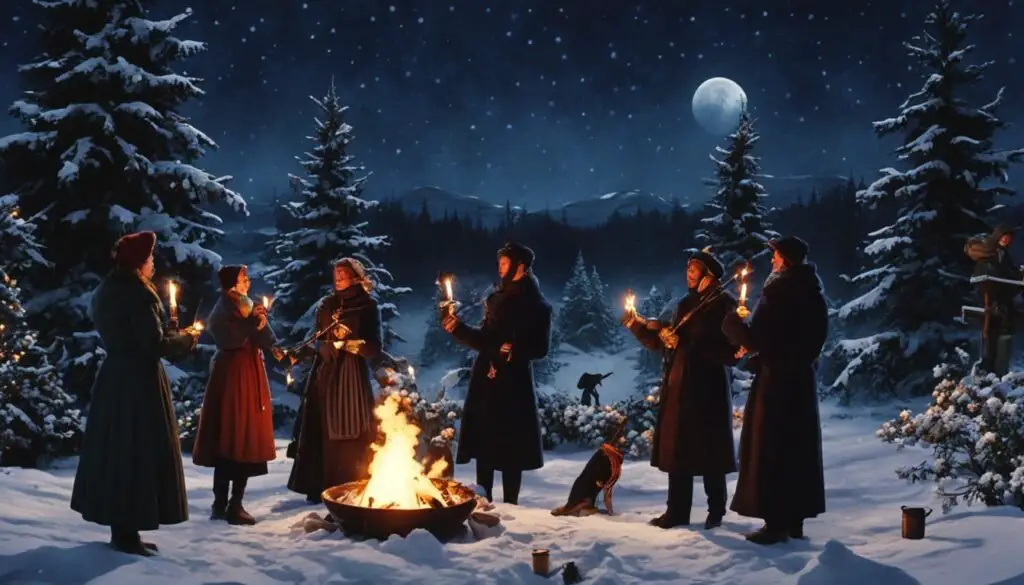
In modern times, Imbolc is celebrated in various ways, blending ancient traditions with contemporary practices. Wiccans and Pagans often incorporate fire rituals and the worship of Brigid into their Imbolc celebrations. Connecting with the element of fire symbolizes transformation, purification, and the return of light as winter gives way to spring.
One popular custom during Imbolc is the creation of Brigid crosses. These unique crosses are made from reeds or other flexible materials, intricately woven together. The process of making Brigid crosses is a significant part of the celebration, as they are believed to bring protection and luck. The crosses are often hung over doorways to guard against negative energies and invite positive blessings into the home.
Imbolc is also connected to the Christian holiday of Candlemas, which falls on the same day. Candlemas celebrates the purification of Mary, forty days after the birth of Jesus, and the presentation of the infant Jesus in the temple. Symbolically, it represents the return of light after the darkness of winter. Candlemas derives its name from the practice of blessing candles during the church service, symbolizing the divine presence.
During modern Imbolc celebrations, candles play a significant role. Lighting candles is not only a symbolic gesture but also a way to honor the return of light and invite its energy into one’s life. The flame of the candle represents warmth, inspiration, and hope for the coming spring season.
Key Takeaways:
- Imbolc celebrations in modern times incorporate Wiccan rituals and the worship of the Celtic goddess Brigid.
- The creation of Brigid crosses, made from reeds or flexible materials, is a common practice during Imbolc, bringing protection and luck.
- Imbolc is connected to the Christian holiday of Candlemas, which celebrates the purification of Mary and the return of light after winter’s darkness.
The Gaelic Seasonal Festivals
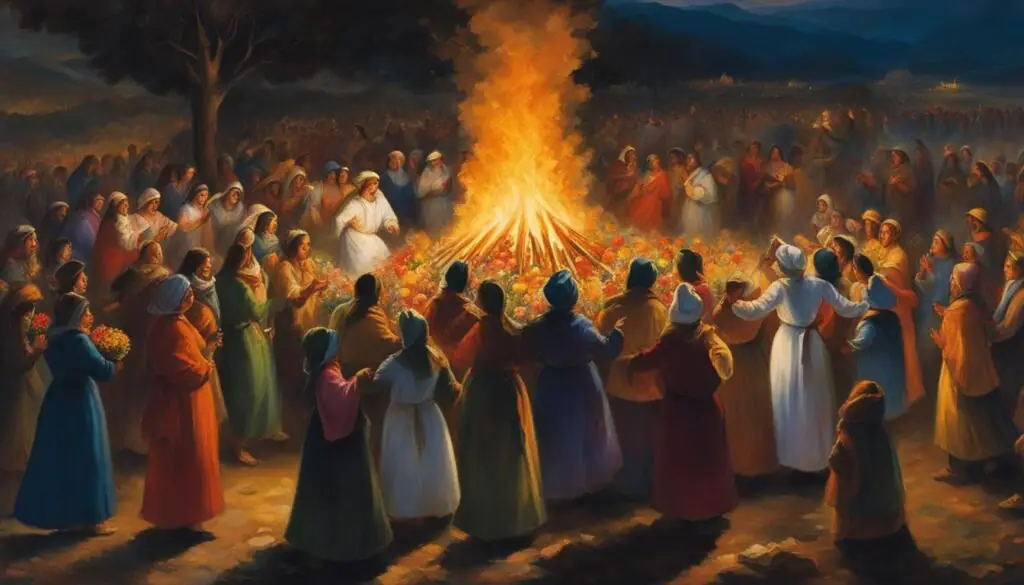
Imbolc is one of the four Gaelic seasonal festivals, along with Beltane, Lughnasadh, and Samhain. These festivals mark the changes in the seasons and have both agricultural and spiritual significance.
Imbolc, as a cross-quarter day, is a time to celebrate the beginning of the spring season and prepare for the rebirth of life. It is a time when the days begin to lengthen, and the earth shows signs of awakening from its winter slumber.
Each of the Gaelic festivals has its own unique rituals and customs, reflecting the deep connection between the Gaelic people and the natural world. These customs often involve feasting, music, dancing, and bonfires to honor the changing seasons and provide blessings for a bountiful year ahead.
The quarter days and cross-quarter days are important markers in the Gaelic calendar, dividing the year into distinct seasons and guiding agricultural activities. These festivals are not only a celebration of nature’s cycles but also an opportunity for communities to come together and express their gratitude for the abundance of the land.
Imbolc and Groundhog Day
February 2nd is also celebrated as Groundhog Day in the United States, a day when a groundhog is believed to predict the arrival of spring based on whether or not it sees its shadow. While there have been attempts to link Groundhog Day to Imbolc, the two festivals have different origins and traditions. However, they both reflect the significance of weather and the anticipation of the changing seasons.
Conclusion
Imbolc, with its rich significance in Gaelic tradition, holds immense importance as a festival that marks the arrival of spring and celebrates the revered goddess Brigid. This cultural and religious holiday is observed by Irish, Scottish, and Manx people, as well as modern Pagans, and serves as a reminder of the intricate connection between nature and human life.
During Imbolc, people engage in feasting and various rituals, such as creating Brigid’s crosses and visiting holy wells. These practices symbolize the preparation for the rejuvenation of life as winter gives way to spring. Imbolc is not only a time to reaffirm Gaelic folklore and Celtic traditions but also to appreciate the cyclical nature of the seasons and the eternal cycle of birth, growth, and renewal.
Whether celebrated as a cultural holiday or a religious one, Imbolc serves as a poignant reminder of the enduring significance of nature in our lives. This festival allows us to pause and appreciate the arrival of spring, the promise of a fresh beginning, and the boundless potential for growth and transformation. Imbolc captures the essence of Gaelic tradition, weaving together ancient customs and modern celebration to honor the rich tapestry of human experience and the ever-changing beauty of the natural world.
FAQ
What is the significance of Imbolc in Gaelic tradition?
Imbolc holds significant importance in Gaelic tradition as a festival that marks the beginning of spring and celebrates the goddess Brigid. It is a time of feasting, rituals, and preparations for the coming season.
What are some common Gaelic festivals?
Some common Gaelic festivals include Imbolc, Beltane, Lughnasadh, and Samhain. These festivals mark the changes in the seasons and have both agricultural and spiritual significance.
What are some Imbolc rituals?
Some common Imbolc rituals include making Brigid’s crosses, visiting holy wells, and performing divination. It is also a time for spring cleaning and preparing for the rebirth of life.
What are Celtic traditions?
Celtic traditions refer to the customs, beliefs, and practices of the Celtic people, who are an ancient Indo-European ethnic group. These traditions vary across different Celtic regions and time periods.
What is Brigid’s Day?
Brigid’s Day, also known as St. Brigid’s Day, is another name for the Gaelic festival of Imbolc. It is celebrated on February 1st and is associated with the goddess Brigid and the Christian saint Brigid.
Are Imbolc and St. Brigid’s Day pagan holidays?
Imbolc has pagan origins but was absorbed into Christianity, and the goddess Brigid became St. Brigid. The holiday is celebrated by both modern Pagans and those who follow Christian traditions.
What is the connection between Imbolc and Gaelic folklore?
Imbolc is deeply rooted in Gaelic folklore and is associated with various customs and beliefs. It is a time when Gaelic folklore intersects with the changing of the seasons and the celebration of the goddess Brigid.
How was Imbolc celebrated in ancient times?
In ancient times, Imbolc was celebrated with rituals and customs that honored the goddess Brigid. These included the creation of effigies of Brigid, lighting bonfires, and crafting Brigid’s crosses.
What is the history of St. Brigid’s Day?
St. Brigid’s Day, also known as Imbolc, has a long history in Gaelic tradition. It was widely observed throughout Ireland, Scotland, and the Isle of Man, with customs associated with the festival being recorded in detail in the early modern era.
Who is Brigid?
Brigid is both a Celtic goddess and a Christian saint. In ancient Irish mythology, she is associated with poetry, fertility, wisdom, and fire. In Christian tradition, St. Brigid is one of Ireland’s patron saints and is associated with agriculture, healing, and protection.
What are some modern celebrations of Imbolc?
In modern times, Imbolc is celebrated in various ways. Wiccans and Pagans often incorporate fire rituals and the worship of Brigid into their Imbolc celebrations. Creating Brigid crosses and celebrating Candlemas are also common practices.
What are the Gaelic seasonal festivals?
The Gaelic seasonal festivals consist of Imbolc, Beltane, Lughnasadh, and Samhain. These festivals mark the changes in the seasons and have both agricultural and spiritual significance in Gaelic tradition.
What is the connection between Imbolc and Groundhog Day?
While there have been attempts to link Groundhog Day to Imbolc, the two festivals have different origins and traditions. However, they both reflect the significance of weather and the anticipation of the changing seasons.


